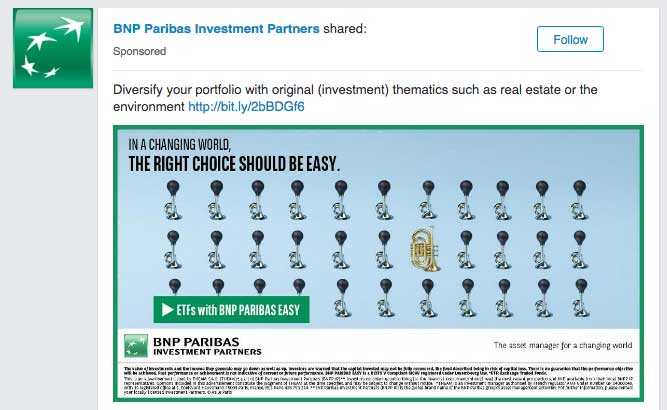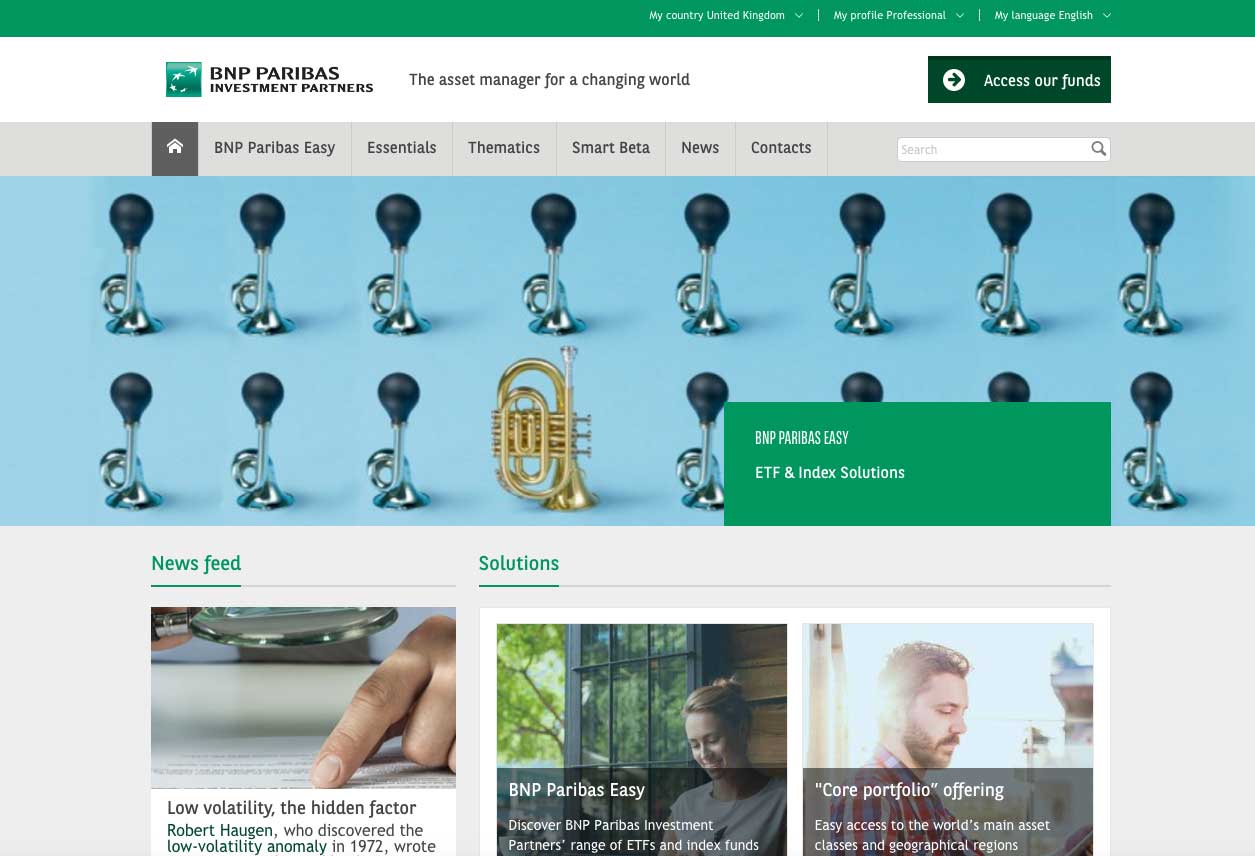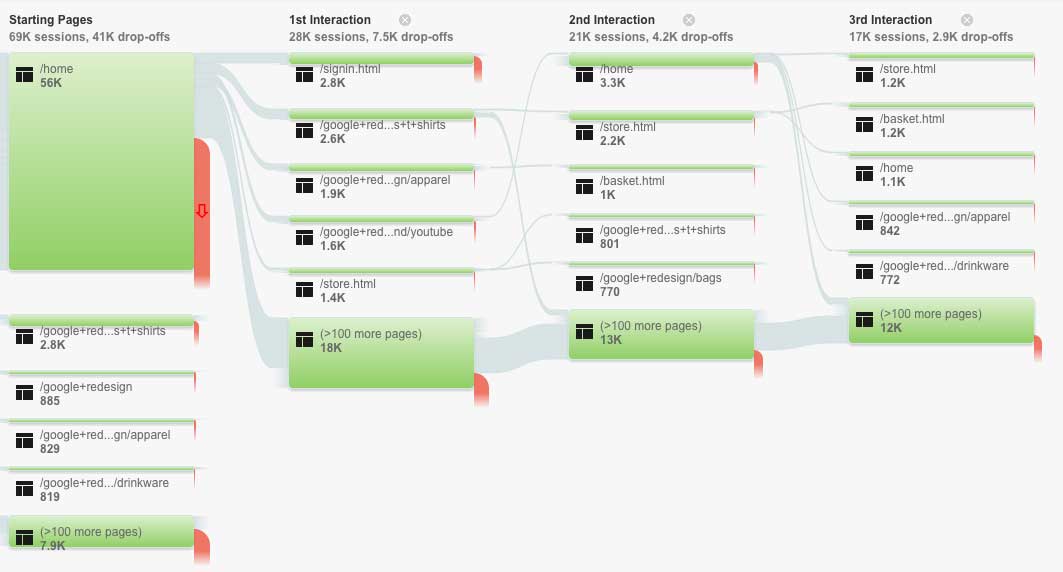What’s stopping you from raking in the enquiries through LinkedIn?
I’m not talking about harvesting connections hammering out requests all day long.
I mean investing in LinkedIn advertising.
LinkedIn sponsored ads give you the opportunity to present your business to 450m worldwide users. Your target audience is in there. Somewhere. It’s especially viable for b2b offerings. With Google Adwords you’re reliant upon user intent. Your ads are triggered when a potential customer searches using a term relevant to your expertise. LinkedIn is different. You position your ads based upon a series of demographics (job title, age, location etc etc). You have the opportunity to reach your target audience. Relatively simply. The problem? Choosing your market vs aligning your message.
As Roy H. Williams (author of Wizard of Ads) states;
‘I’ve never met a business owner whose advertising failed because they were reaching the wrong people.’
So, will you make Linkedin advertising a success for your own business?
Let’s review an Ad & Landing Page combination from investment bank BNP Paribas Investment Partners – the asset manager for a changing world…
THE BUSINESS OBJECTIVE
Why are they using LinkedIn sponsored ads?
My guess is to reach a new audience of high worth potential clients who already have an investment portfolio (I’m feeling honoured to have made it into their audience segment….)
First question. Is ‘reach’ really a goal? Sure, you’ll increase traffic. More traffic isn’t a business objective. What business objective will reaching your target audience provide? It simply opens the door for conversation. Your job is to create conversation.
THE PROBLEM YOU’RE SOLVING
To engage a new audience you need to have something to share. The welcome handshake means nothing if you have little of note to greet your website visitor with.
The simplest question to ask is ‘what problem can we help people solve?’
That, for the majority of businesses, is the advertising hook.
THE HOOK
Quickly scan the ad below. Any idea of what BNP Paribas, the advertiser, is looking to introduce me to? An investment product? A self-managed solution? A service?

There are two components to the ad. The text and the supporting image.
Let’s look at the text first of all.
As an advertiser you have an advantage over your audience. It’s an advantage you’ll oftentimes forget. You know what’s coming next. You know exactly what’s on that landing page that will influence the decision making of your prospect. You know your product. Your audience doesn’t.
‘Diversify your portfolio with original (investment) thematics such as real estate or the environment’
Okay. Where do we start? I’m jumping into bullet point mode.
- Why assume I have a portfolio?
- Why is investment in brackets?
- ‘Such as’ is a horribly vague way of demonstrating authority
- WTF is a thematic?
Point one. Put your arm around your customer. ‘Ready to start building your investment portfolio?’, ‘Time to take a smarter approach to growing your investment portfolio?’ Say something that elicits interest. A positive response. A quick nod of the head. ‘Why thank you for asking, yes I am!’
Better yet. Consider the product you’re introducing. What’s the differentiating factor? Here, we’re talking real estate or environmental investments.
The question you need to be answering is ‘what’s in it for me?’
Why should I consider changing my approach to building a portfolio? Why diversify in the first place?
As your potential customer I’m looking to you for guidance.
‘Invest in Real Estate and Environmental sectors. Learn how a diversified portfolio will give you access to investment opportunities in brand new markets’
The financial industry is heavily regulated. You can’t make promises. Instead, plant seeds. Using a hook of ‘brand new markets’ will create an emotional response. “It sounds far more exciting than my current traditional approach to investing… tell me more!”]
Point two. The use of (brackets) fragments the sentence. You want your ad text to flow. There’s no need for the clunky introduction of investment. Can’t we just talk about an ‘investment portfolio’?
Point three. Don’t be vague. You’re talking financial responsibilities here. ‘Such as’??? Are you just picking ideas out of the air? No. You’re addressing my problem with a solution. Be confident in what you’re offering.
Point four. Keep your language simple. Don’t assume that because I invest I have a natural understanding of ‘thematics’. I want to read that sentence and get exactly what it is you’re talking about. I need clarity in exactly what will happen when I click that link. Two critical points of all your social and search advertising.
Now, let’s take a look at that image. I’m thankful there are no stock images of saplings (bonus points for a young tree growing from your hand…). However. Now, I’m choosing a tuba over a car horn? ‘In a changing world the right choice should be easy?’ Really? Should it? I guess I’m picking a tuba?
Your supporting imagery (pictures) [see what I did there?] will demonstrate what I will achieve with your help. Nothing smart. Nothing that requires me to consider the ad. That never happens. Just give me something that visualises where I’m heading.
Let’s not get started on the .1px size terms and conditions within the ad….
THE TRIGGER
Where’s the call to action?
Within the ad. ETFs WITH BNP PARIBAS EASY
Again. A massive assumption is being made here that I will know what an ETF is (just in case you were wondering it’s an exchange traded fund. I googled it.)
There’s zero correlation between the text and the call to action. Why suddenly introduce ETFs when the text talks about diversifying your portfolio? Why make this more complex than it needs to be? Keep this stuff simple folks. One message. One call-to-action. Want to try different messages? Split-test. Don’t throw them all into the ad. Keep on target. This is called targeted advertising for a reason.
This is where you answer the question ‘what do you want me to do?’. That call to action clarifies what is about to happen next. A trigger.
- Learn how…
- Discover what…
- Get your…
- Start building…
No ETFs. Don’t introduce terms for the first time in the Call-to-action. Never.
THE LANDING PAGE
Look! More orchestral wonder greets you on the landing page. Approximately 60% of the above-the-fold proposition is made up of musical instruments. This is a category page. I feel lost. The objective of the landing page is to carry on the conversation instigated by your ad. This doesn’t. It starts a whole new chat. And it will confuse the hell out of anybody (investment savvy or not).
It’s in dire DIRE need of a clear introductory value proposition. ‘What am I about to find out?’ is the question you need to be addressing. Deliver a step-by-step approach. Direct your user towards their end goal (it will coincide with what you’re looking to sell). Under ‘solutions’ you’ll find a content box that mentions BNP Paribas Easy. My guess is that this is the service they’re offering. They’ve just failed to address what that service is.

This is the equivalent of a homepage, not a landing page. For your business, the benefit of creating a landing page is your awareness of the intent of your ad. You’re in control. You’re guiding your buyer’s journey. You ARE the guide. Keep on message and you’ll retain the attention of your visitor. That’s what brought them to your landing page in the first place. The ‘you might want this! YOU MUST want that?!’ approach doesn’t work.
For your website visitor, the benefit of a landing page is clarity. They’ve demonstrated what is of interest to them by the ad they clicked. Retain that interest. Take a look at the navigation bar below:

Each element is a guessing game. What essentials? What thematics? What is Smart Beta? News about what? Who am I contacting? Then there’s the call to action of ‘access our funds’. What? Really? We get to access your funds?!? Thanks BNP Paribas!
Picture the scenario. You’re investing budget into LinkedIn Advertising. You’re asked ‘how’s it working?’ How, as an advertiser, can you measure the success of this landing page experience? You’re simply throwing money into LinkedIn. Hoping for impressions. Hoping for clicks. There’s no criteria, with the exception of building traffic, that you can measure.
Are you dropping website visitors somewhere in the middle of your own website? See what’s happening. Make a small investment of your own by subscribing to HotJar. Heatmaps and visitor recordings will show you exactly what’s happening when people visit your page. You need to have this information to hand in order to make a judgement call regarding the use of landing pages vs internal website pages. Are visitors heading off in directions you don’t want them to be (other than the ‘back’ button)?
You can also use Google Analytic’s Userflow for great click insight into what’s happening when people land on particular internal page:

The days of vague social advertising experimentation are long gone.
This is the problem when your strategy begins with the ad (the click). Instead, work backwards. Start with the end goal and map out the journey that takes your customer there. Make it as simple and in as few steps as possible. And make it very very clear.
Remember that social media advertising is a distraction. Your two primary objectives are to win and retain attention. On a scale of hot and cold leads? You’re cool. Take the role of the guide and keep your language simple and on message. Only then will you see anything close to measured success through your advertising.
THE GOAL?
This is simply about traffic generation. There’s no guide to download. No form to fill. The ‘contacts’ page lists 5 members of staff and their direct email address. How would I know who to contact? Another guessing game.
How can I find out more? With great difficulty.
Not one giant ‘How To Invest’ green button in sight.
ABOUT HOOKS & TRIGGERS
Hooks & Triggers is a weekly series where I examine search, content marketing and social media advertising to provide you with ideas of how to make your own advertising more effective. I’m looking at each journey through the eyes of the customer. None of the ads I analyse are my clients. Simply examples, good and bad, taken from my own search and feeds from a wide variety of B2B and retail markets.

